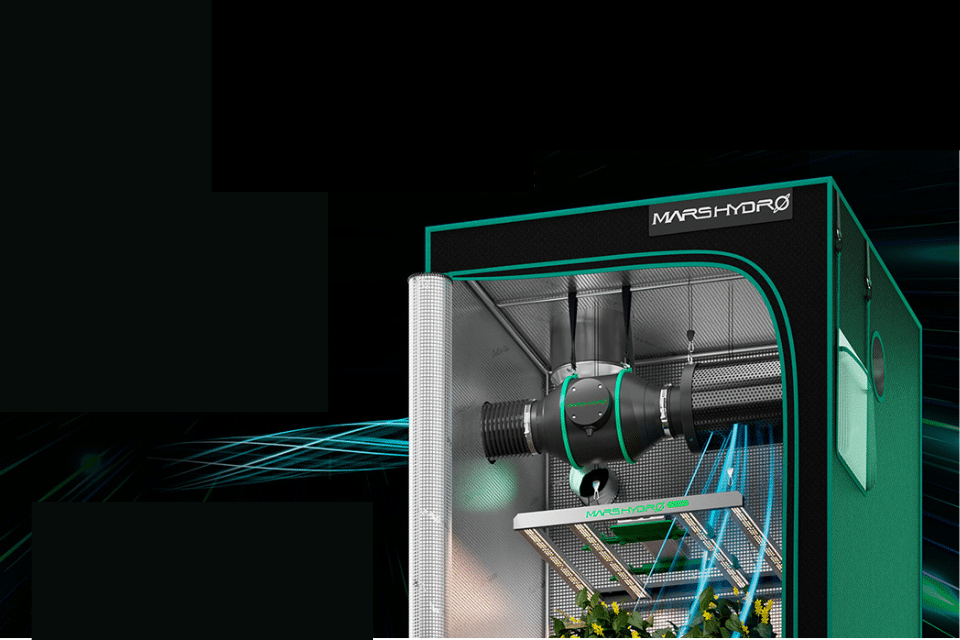Table of Contents
Growing indoors means your grow tent functions as a self-contained ecosystem—and like any ecosystem, balance is key. Humidity is one of the most critical factors to control, as excessive moisture can lead to mold, mildew, and stunted plant growth. If you’re struggling with high humidity levels, here’s how to bring them down effectively.
Understanding Humidity in a Grow Tent
Humidity refers to the amount of water vapor in the air. In an enclosed space like a grow tent, managing moisture is essential for healthy plant development. The most useful measurement for growers is Relative Humidity (RH), which indicates how saturated the air is with moisture at a given temperature. (Absolute humidity is more technical and less practical for everyday growing.)
Ideal Humidity Levels for Different Grow Stages
- Seedlings: 65-70% RH
- Vegetative Stage: 40-70% RH
- Flowering Stage: 40-50% RH
- Late Flowering/Harvest: 30-40% RH
The Impacts of High Humidity on Plants
Your plants depend on a balanced environment to stay healthy. When humidity levels soar beyond what your plants can handle, the damage can be extensive and sometimes irreversible. Let’s break down the major impacts:
Stunted Growth
Plants rely on a natural process called transpiration, where they release moisture through their leaves. This process helps regulate temperature and allows them to “breathe” by absorbing carbon dioxide and releasing oxygen. But when the air is already saturated with moisture, this process slows down dramatically.
Root Rot
Excess humidity in the air often means excess moisture in the soil, especially if you’re already overwatering. Constantly soggy soil creates a breeding ground for harmful fungi and bacteria. The roots, deprived of oxygen, begin to rot.
Bud Rot
Bud rot (also known as Botrytis cinerea) is a grower’s nightmare. This fungal disease thrives in humid environments, especially when air circulation is poor. It usually starts in the dense center of a cola (the main flower cluster), where moisture gets trapped.
Powdery Mildew
Another common result of excess humidity is powdery mildew—a white, powdery fungus that covers leaves, stems, and sometimes buds. While it might look like dust at first, it spreads fast and can smother the plant’s ability to photosynthesize.
Pest Infestations
High humidity can create a haven for pests like fungus gnats, spider mites, and thrips. These bugs love damp environments and weakened plants. Once they move in, they’re tough to kick out without harming your plants even more.
Best Ways to Lower Humidity in a Grow Tent
High humidity in a grow tent can lead to mold, mildew, and poor plant health. To keep conditions optimal, try these proven methods:
1. Use Inline Duct Fans for Proper Ventilation
Stagnant air traps moisture, so keeping air moving is key. An inline exhaust fan connected to ducting pulls humid air out while bringing in fresh air. This constant exchange helps prevent damp spots and keeps plants dry.
2. Optimize Passive Airflow with Intake Vents
For a simple, low-energy solution, open intake vents or set up a passive intake system. This allows drier outside air to flow in naturally, balancing humidity without extra equipment.
3. Run a Dehumidifier for Direct Control
- Electric dehumidifiers work best in large grow tents, actively removing moisture from the air.
- Desiccant dehumidifiers (like silica gel packs) are ideal for smaller setups or when power usage is a concern.
4. Avoid Overwatering Your Plants
Excess water raises humidity as it evaporates. Let the top inch of soil dry out before watering again to keep moisture levels in check.
5. Use an Air Conditioner for Cooling and Drying
Air conditioners not only lower temperatures but also pull moisture from the air, making them a great two-in-one solution for humid grow tents.
6. Choose the Right Tent Size for Better Airflow
A cramped tent traps humidity. If plants are too crowded, upgrade to a larger space where air can circulate freely, reducing moisture buildup.
Conclusion
Controlling humidity in your grow tent isn’t just a luxury—it’s a necessity if you want healthy plants and bountiful harvests. Whether you’re a beginner or a seasoned grower, keeping moisture in check will make or break your grow. Start simple with fans and proper watering, and level up with dehumidifiers and automation as needed. Your plants will thank you for it by thriving.








